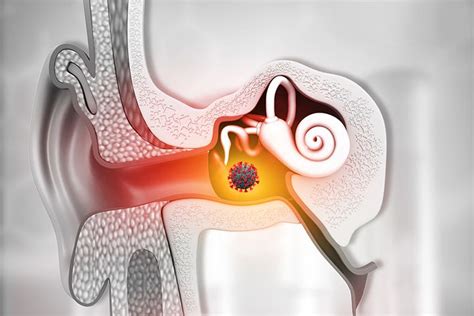Recent studies have highlighted the potential of the SARS-CoV-2 virus, responsible for COVID-19, to infect the inner ear, raising questions about the broader implications of the virus on ear health. This connection is particularly significant considering the established knowledge that viruses like cytomegalovirus, mumps, and hepatitis can lead to deafness by infecting the inner ear. However, the specific mechanisms through which these infections cause hearing loss remain largely unclear.
Before the pandemic, researchers Gehrke and Stankovic were developing cellular models to study inner ear infections. Their work aimed to unravel the molecular intricacies behind the ability of various viruses, including mumps, chickenpox, measles, and hepatitis, to cause deafness. This research is crucial for understanding and potentially mitigating the auditory impacts of these viruses.
Ear infections, especially in children, are commonly caused by bacteria such as Haemophilus influenzae, Streptococcus pneumoniae, and Moraxella catarrhalis. Interestingly, Streptococcus pneumoniae was responsible for a significant majority of ear infections in children before the introduction of pneumococcal vaccines.
The COVID-19 pandemic has also seen a rise in long COVID symptoms, which include difficulty breathing, cough, fatigue, chest pain, joint or muscle pain, heart palpitations, and pins-and-needles sensations. These symptoms often worsen after physical or mental activities. Some studies suggest that long COVID may involve nerve damage triggered by infection-induced immune dysfunction, offering potential avenues for treatment.
Sinus infections and COVID-19 can have overlapping symptoms, such as loss of smell, fatigue, cough, and shortness of breath. Differentiating between these conditions is critical for appropriate treatment. Additionally, the use of earbuds has been linked to an increased risk of ear infections, emphasizing the importance of taking breaks to allow air circulation and reduce irritation.
Chronic Suppurative Otitis Media (CSOM) is a significant concern, particularly in tropical regions. It is characterized by chronic ear discharge and infection, primarily caused by the bacterium Pseudomonas aeruginosa. The development of accurate animal models for CSOM is essential for advancing our understanding and treatment of this condition.
For more detailed information on these studies and findings, please refer to the following sources:
MIT News,
Scope,
University of Virginia News,
UC Davis Health,
Ohio State Health & Discovery,
RUSH,
Harvard Gazette,
SPARK Stanford.
